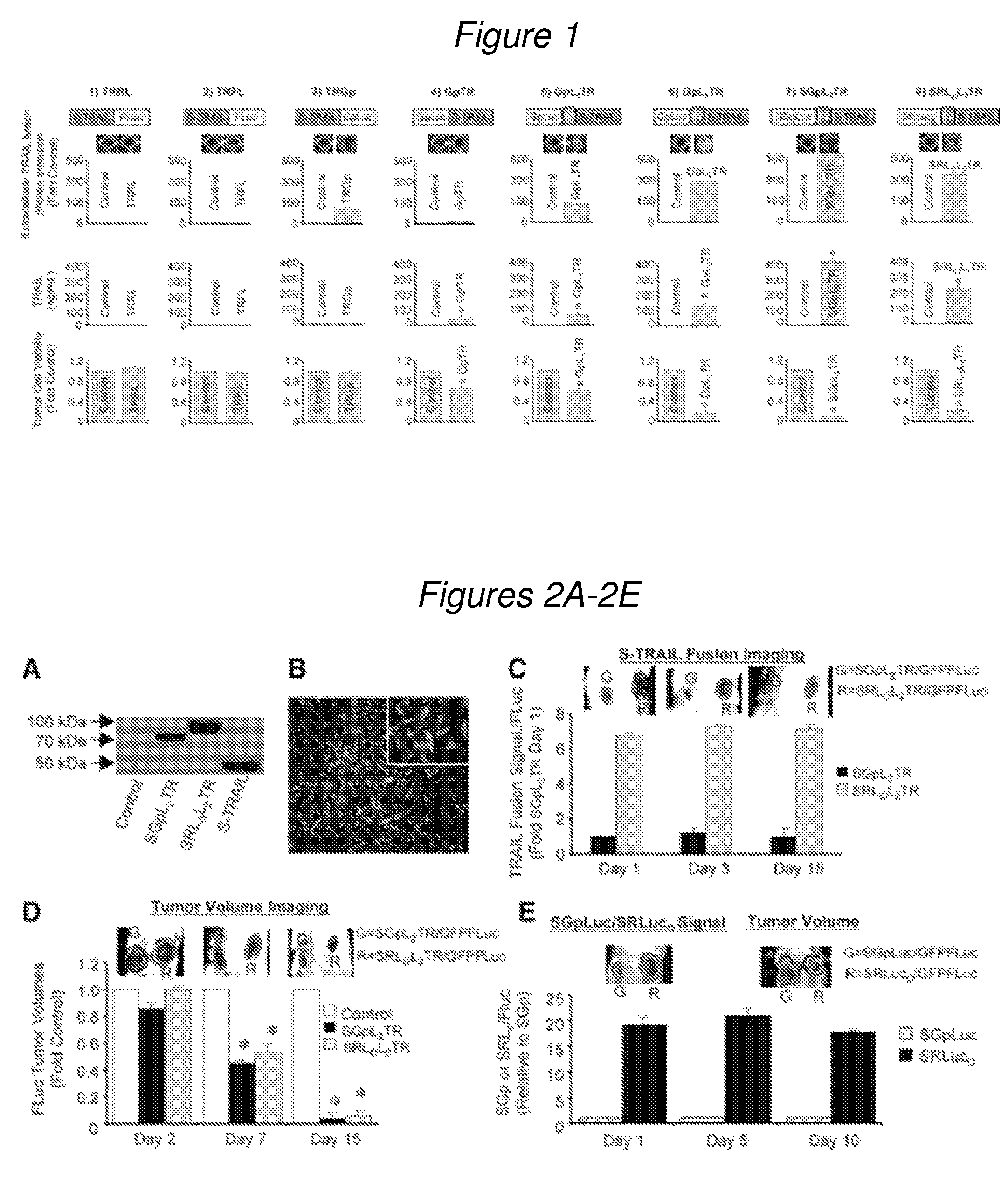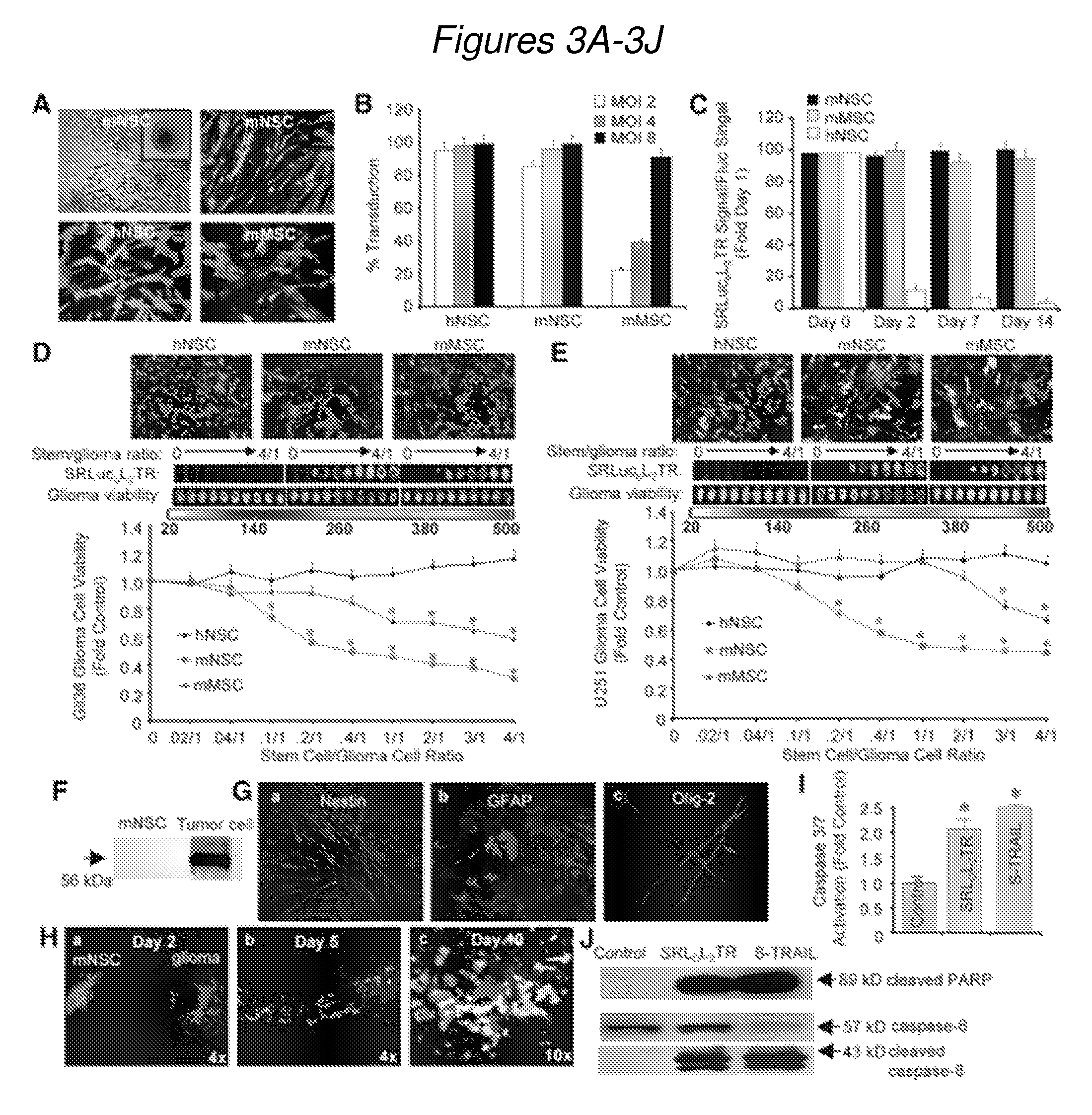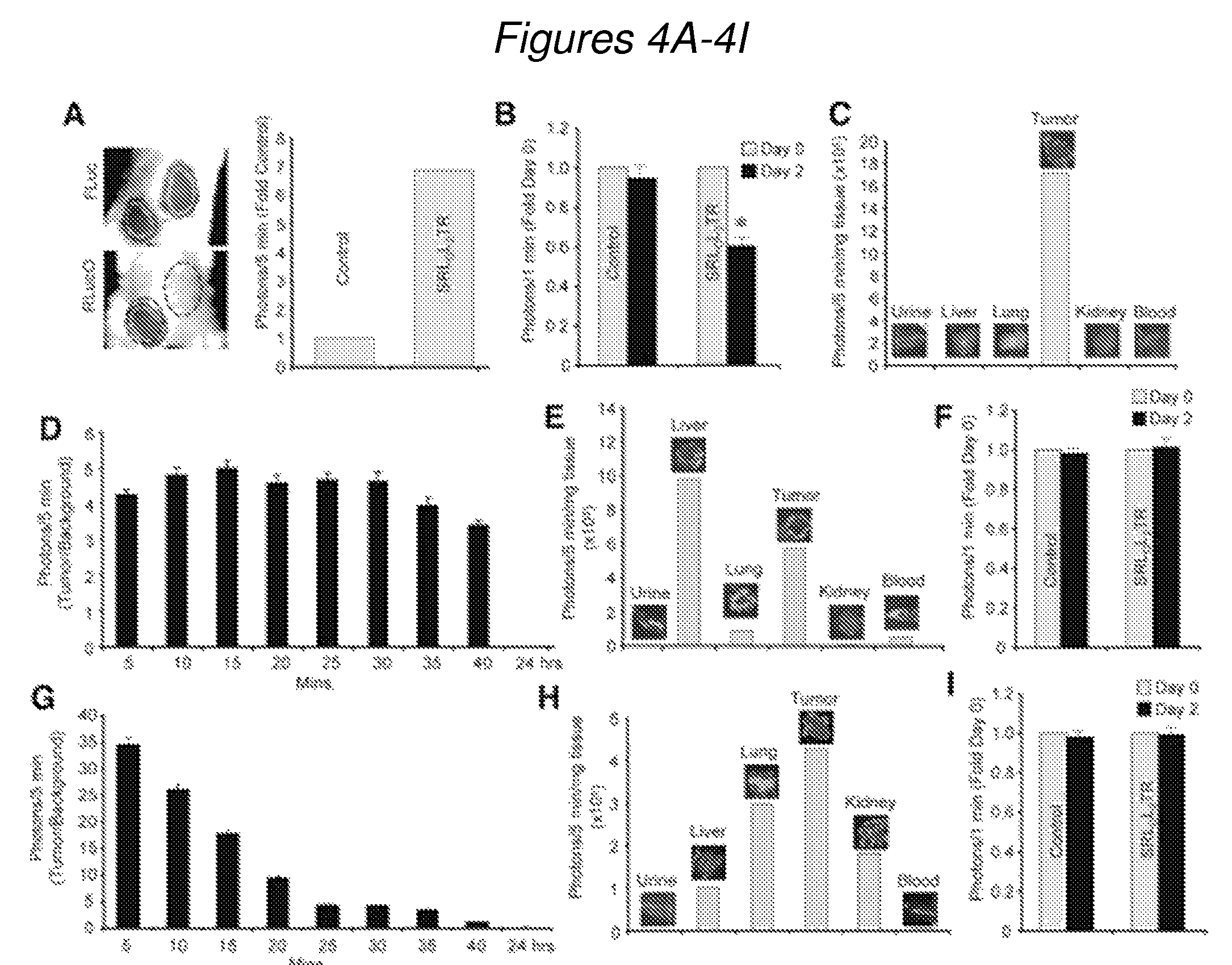Treatment and bioluminescent visualization using multimodal TRAIL molecules
a multi-modal, trail-molecule technology, applied in the direction of prosthesis, drug composition, peptide, etc., can solve the problems of difficult treatment success, difficult timely detection and treatment, and cancer remains one of the most deadly threats to human health, and achieves the effect of reducing tumor growth, reducing tumor growth, and retaining potent anti-tumor functions
- Summary
- Abstract
- Description
- Claims
- Application Information
AI Technical Summary
Benefits of technology
Problems solved by technology
Method used
Image
Examples
example 1
A MultiModal TRAIL Agent Integrating Therapeutic and Diagnostic Activities Reveals Multiple Aspects of Stem Cell-Based Therapy
Engineering and Screening of Optimized Therapeutic and Diagnostic Luciferase-S-TRAIL Fusions
[0274]To create novel multimodal TRAIL agents that can both be easily visualized for serial monitoring of cell-based pharmacokinetics and retain potent anti-tumor function, numerous lentiviral vectors (LV) encoding fusion molecules between S-TRAIL, i.e., a therapeutic, secretable TRAIL module, and various luciferases, as reporter modules, were generated. (FIG. 1, FIG. 6A-6D, Table 1). To select the molecule with optimized diagnostic and therapeutic activity, 293T cells were transduced with LV encoding each construct at multiplicity of infection (MOI) 1 (FIG. 6B), and conditioned media from transfected cells was screened for light emission, S-TRAIL concentration, and anti-tumor efficacy. To first select the appropriate molecular composition and orientation, direct fusio...
example 2
Encapsulated Therapeutic Stem Cells Transplanted in the Tumor Resection Cavity Eradicate Brain Tumors
Creating a Mouse Model of GBM Resection
[0290]To develop a mouse surgical resection model of GBM, malignant GBM cells engineered with fluorescent and bioluminescent proteins were employed. Human GBM cells, U87 were transduced with lentiviral construct LV-Fluc-mCherry, sorted and screened for mCherry (FIG. 10A) and Fluc expression (FIG. 10B). A direct correlation was seen between the Fluc expression and the cell number (FIG. 10B). U87-Fluc-mCherry human GBM cells were implanted in a cranial window created by removal of a small circular portion of the skull (FIGS. 10C-10D, FIGS. 14A-14B) and mice were imaged for tumor progression / volumes over time by fluorescence intravital microscopy (IVM) and Fluc bioluminescence imaging, (FIGS. 10E, 10I). Established GBM tumors in mice generated by implantation of low (7.5×104) and high (1.5×105) number of GBM cells were resected and IVM and BLI imag...
example 3
Additional Multimodal TRAIL Agents
Path to Clinics Using Multimodal Molecules
[0305]The HSV-TK (Herpes simplex virus-thymidine kinase) gene has been explored as a reporter and / or suicide gene previously. Both gene therapy with HSV-TK and the use of this gene as a marker are currently applied in patients with various forms of cancer. Specifically, therapy has been performed by intratumoral injection of HSV-TK carriers (like viruses) followed by systemic ganciclovir injection and noninvasive positron emission tomography (PET) imaging of HSV-TK expression has been performed by using [18F]FHBG (a fluorine-18 labeled penciclovir analog) radiotracer.
[0306]Based on our multimodal TRAIL agent molecule, Rluc(o)TRAIL, described herein is a multimodal molecule that can be used in clinical settings. Specifically, this can involve fusion of a secretable HSV-TK to the N-terminus of TRAIL to create a HSV-TK-TRAIL. This molecule can have enhanced cancer cell killing properties because of the expressi...
PUM
| Property | Measurement | Unit |
|---|---|---|
| survival time | aaaaa | aaaaa |
| MW | aaaaa | aaaaa |
| concentration | aaaaa | aaaaa |
Abstract
Description
Claims
Application Information
 Login to View More
Login to View More - R&D
- Intellectual Property
- Life Sciences
- Materials
- Tech Scout
- Unparalleled Data Quality
- Higher Quality Content
- 60% Fewer Hallucinations
Browse by: Latest US Patents, China's latest patents, Technical Efficacy Thesaurus, Application Domain, Technology Topic, Popular Technical Reports.
© 2025 PatSnap. All rights reserved.Legal|Privacy policy|Modern Slavery Act Transparency Statement|Sitemap|About US| Contact US: help@patsnap.com



